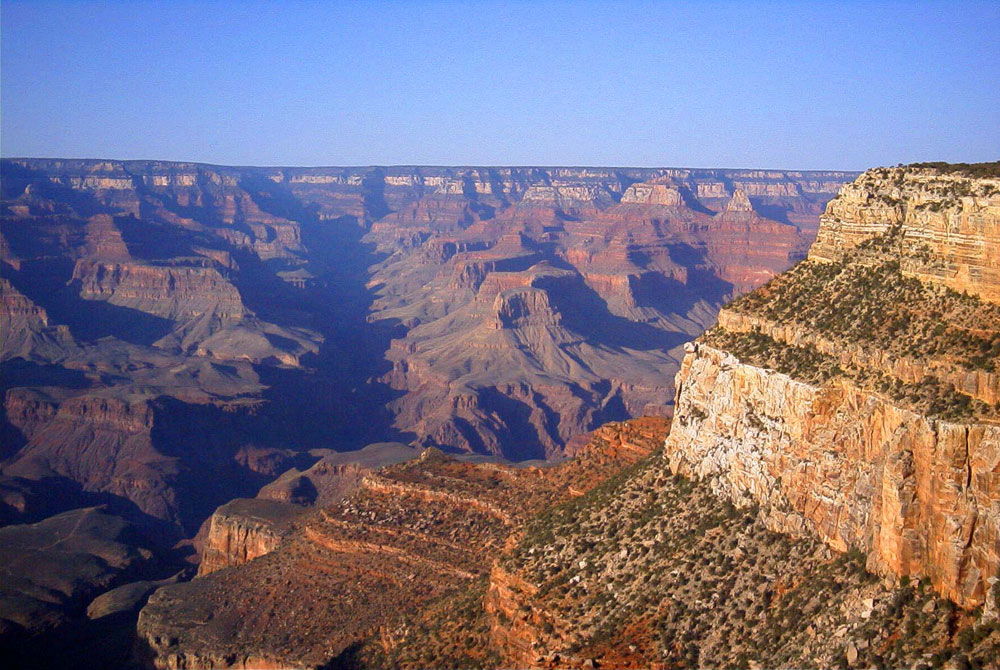
How exactly was the Grand Canyon formed? The question has been hotly debated by canyon geologists in Colorado, Utah, Arizona and New Mexico for more than a century.
Now, according to the LiveScience website, new research suggests that the gigantic canyon’s origins might be more recent than originally thought. And the Grand Canyon might have been caused by volcanic activity instead of water erosion. The discovery of an unusual structure beneath the Colorado Plateau implies that at one point it rose up, was filled with magma, and then eroded into the deep valleys that produced the world-famous canyon.
Up until now, scientists have generally believed that the canyon was formed by the Colorado River, which was thought to have slowly cut through layers of rock over millennia. The new data indicates a more recent formation — in the last six to seven million years.
“Anyone who goes to the Grand Canyon and looks down should think, ‘What is it that made it this way?’ The most immediate answer is water, that a river cut this canyon, but what is it that made the rock it lies in, the earth, move up?” Alan Levander, a structural seismologist at Rice University, told LiveScience.
In the lithosphere — the Earth’s crust and upper mantle beneath the oceans and the continents — under the Grand Canyon and much of the western half of the Colorado Plateau, scientists found an anomalously cold region more than 120 miles (200 km) deep sinking into the Earth. The theory now is that this might have been responsible for the remarkable geological history of what became the Grand Canyon.

